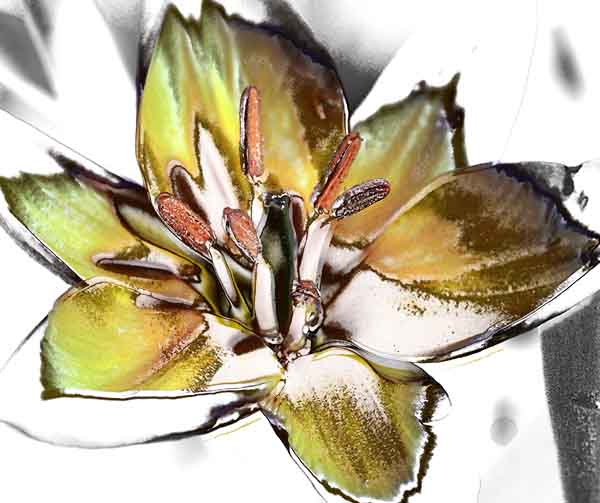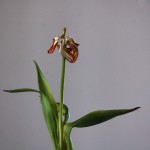.
Inclination
Am still searching for a way to capture the ultimate tulip-ness. Today I used photoshop to deconstruct photos from Tulip ‘Tarda’, which I grow in containers – and very successfully, too. More flowers every year, my kind of bulb ;)

I like the idea of being part of history – from the Dutch Tulip Craze onwards, we’ve been very in tune with the species. But why? “Getting tulips to bloom in your garden year after year is no problem, if your garden happens to be located in the foothills of the Himalayas, or the steppes of eastern Turkey [link].”
“The tulip – an oriental native first introduced to the western world some 400 years ago – is at its perennial best in conditions that match the cold winters and hot, dry summers of its native regions. Holland’s sandy soil, and the ability of the Dutch to make water do just about anything they want, actually offer some of the most exellent growing conditions for tulip bulbs ont the planet. Professional Dutch growers subject their plant stock to an ingenious series of heat and humidity treatments each summer before planting. By the time the bulbs are tucked into the sandy Dutch soil for their winter’s sleep (and Mother Nature’s ‘cold treatment’) the bulbs have been fooled into thinking they’ve been throug another summer draught in the Himalayas.”
What series? I tried to find a prescription on the ‘net, but tulip growers don’t hand these out like candy. So I did the next best thing: I experimented. And found a way to simulate the hot-and-cold treatment with relatively little hassle:
- [most] tulips and [all] daffodills that I have live in containers;
- Right before flowering, I give each container a little fertilizer. And put them in a spot where I can best appreciate the blooms – terrace or outdoor table;
- I deadhead religiously;
- After deadheading the containers go to a hot and out-of-the way spot to let the leaves soak up sunlight, store carbohydrates, then disappear. This stage is ugly, so out-of-the-way is a good idea;
- Afterwards the containers over-summer under the beech hedge, so they are hot and dry. Tulips loathe water. They rot. They sulk. They disappear [link];
- Come november I put the containers out in the open again, so the bulbs get the wet and the cold they need.
Minimum effort for maximum effect – no lifting, storing or re-planting, which I think is cumbersome. All I do is drag the containers around three times a year, which takes me about half an hour each go. As an added bonus, I get to make nice plant compositions in real time, i.e. when tulips and daffs are in bloom. There are people who plan their borders and do composition on paper – I do admire this, but haven’t the inclination.
| « Marry | <-- previous post | next post --> | The air was calm enough » |
|---|







